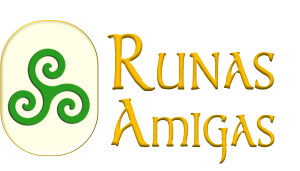the wheel of the year
The Autumn Equinox
The Wheel of the Year is how the calendar of the major Celtic holidays is defined.
We would be inclined to think that, being the Celtic one a civilization founded on the rhythms and cycles of Nature, like every other ancient civilization, the most important celebrations were tied to the equinoxes and to the solstices.
Indeed, Celtic religiosity had in the solar one of its main cults, but, nevertheless, there was a multiplicity of astronomical aspects that the Druids took into account.
For example, the heliacal rising of the brightest stars in the firmament, such as Antares, Capella, Aldebaran and Sirius, marked the exact day of the major celebrations, which were celebrated on November 1, February 1, May 1, August 1, respectively. Are they dates that remind you of anything?
Minor festivities were considered the solstices and equinoxes, which occurred approximately 40 days later and earlier than the major ones. Here again, we have another peculiarity, linked to the sacredness of the number 40.
Today, therefore, is the autumn equinox, Mabon for the Celts, the festival that celebrates the balance between day and night, rewards the hard work done for the first harvest (that of wheat), and enshrines the era of the second harvest. Not surprisingly, in our tradition, September is the month dedicated to the grape harvest.
Mabon marks a passage, it is a bridge of connection between the powerful and life-giving energy of the summer Sun, and the maturity of which autumn promises the arrival, and which will culminate in winter.
From a mythological point of view, Mabon, meaning “young man”, was the son of the goddess Modron (Mother Earth) and Mellt the Illuminating. When he was only three days old, Mabon was kidnapped by his mother to be taken prisoner in the Kingdom of the Dead (Annwn), ruled by the Dead God Arawn, who presides over the cycle of seasons. So Mabon acquired eternal youth, because in the Kingdom of the Dead he never gets old. Legend has it that King Arthur’s cousin was able to find on Earth the entrance to the Kingdom of the Dead and to save Mabon, who then followed him and helped him in his feats.
This myth closely resembles the Greek myth of Persephone and her mother Demeter, and, not surprisingly, in this period in Greece the Eleusinian Mysteries were celebrated in her honor.
There are those who associate Mabon to the transition represented by the following sequence of Runes: Ehwaz – Mannaz – Laguz – Inguz, 4 Runes found in the Family of Maturity, and that describe the evolution of the Cycle of Life from its gradual growth after the overpowering Sun of August (Ehwaz), who enlightened the Earth with all its light, and nourished it with all its warmth, to the solidarity between men necessary for the sowing and to realize the harvest (Mannaz), to the management of how the resources will be used in the months to come (Laguz)and, finally, at the end of the cycle started with the sowing (Inguz), which announces us that Nature is tired and yearns for the well-deserved rest.
Traditionally autumn is considered the best time to thank for the fruits of the Earth and to understand the importance of sharing them with others, to ensure the blessing of the Gods during the winter months, this is why Mabon is still celebrated with a table set with seasonal fruits and red leaves, decorated with the famous Cornucopia, symbol of material and spiritual Abundance, and a walk in the green is recommended, to collect chestnuts and oak leaves.
